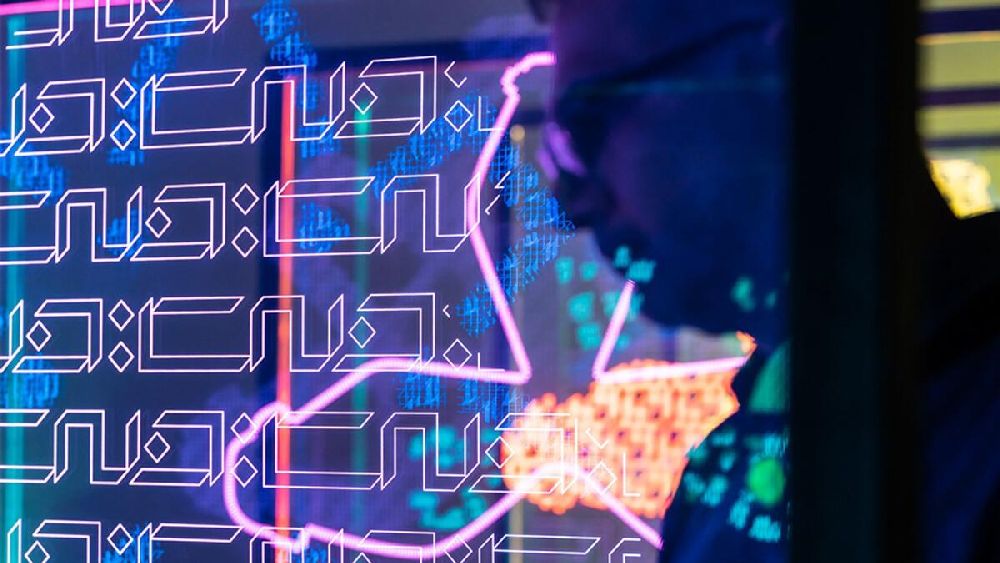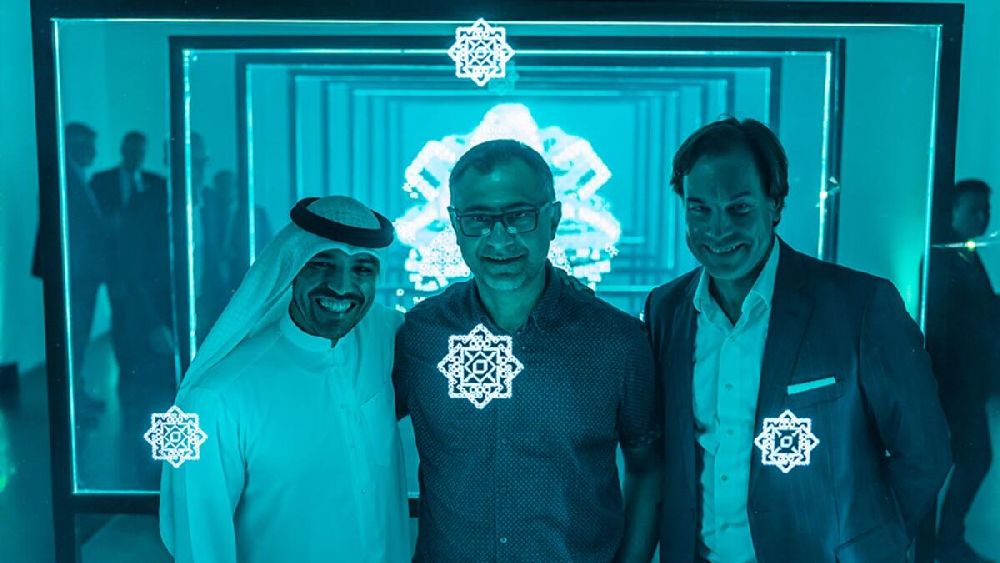Siemens is proud to partner with calligrapher and artist Wissam Shawkat and KNOW Creative to present FABRIC, a unique perspective on the beauty, magic and vitality of numbers. With FABRIC, Wissam and KNOW Creativ have woven the Arab heritage of numbers into Expo 2020 Dubai’s vision for the future – a world in which cities are safe, efficient and harmonized with the natural environment.
The Middle East is the birthplace of the numbering system that most of the world uses today. Numbers are a link to this region’s history, but they also connect us to tomorrow. No city embraces the future like Dubai, and this year’s Expo was a showcase for the transformative power of digitally connected smart cities.
Today we work, play, study and entertain ourselves immersed in an invisible sea of numbers. Our modern lifestyle is possible thanks to basic code strings of zeroes and ones. The vast amounts of data that we generate and use each day relies on this binary coding, which flows ceaselessly around us to power our digital era.

“It’s incredible to think that behind something as complex as today’s modern digital world is something as simple as a chain of numbers,” says Siemens Middle East CEO Helmut von Struve. ”Every time we pick up our phone, get on a train or switch on our TV, this binary code makes things happen. Numbers are the lifeblood of modern life, creating a connected world.”
For FABRIC, Wissam and KNOW Creative created a series of 10 calligraphic images on separate panes of glass. Each illustration depicts part of the blueprint of the Dubai Expo site. When viewed in their entirety, the layers of images overlap to form a complete Expo blueprint, embedded in an intricate pattern of zeroes and ones. The art represents the basic code of digitalization and celebrates its link to Arabic culture.
“All ten digits that we know and use – from 0 to 9 – were first created in the Arab world over 1,000 years ago,” Wissam says. “This numbering system spread from North Africa into Europe, eventually becoming almost universal. So, the zeroes and ones of modern digital code actually have their origins in Arabic history.”
Arabs, inspired by even older Hindu numbers, developed their own numbering systems. During the tenth century, Arabic numbers spread into Europe from Northern Africa and Andalucia in Spain. They won converts with their graceful simplicity. As a logical system, Arabic numbers marked a huge improvement over complex Roman numerals. And as calligraphic forms, they held an immense aesthetic appeal.
This appeal reflects the importance that Arabic culture has always placed on the artistry of writing. In Arabic numbers and script, flow and rhythm are paramount, with simple elegance to the fore. They combine function and form in an ideal union.
Arabic numbers have also been a catalyst for economic and technological progress through the ages. The Arabic system enabled rapid calculation, a necessity for surveying, navigating and financial record-keeping. From commercial booms to creative bursts such as the Renaissance, numbers have played a vital role.
Numbers have more recently served as the medium for computers and code. Since the 1940s, the ‘number strings’ principle has led to the various systems such as ASCII and binary-coded decimal that computers use today to encode data and telecommunications use to transfer it.

Dubai and other digitally connected cities have now entered a new era, one of almost infinite possibilities for data and digitalization. Siemens is at the forefront of this world, building intuitive bridges between physical and digital realms. Its goal is to improve the efficiency and reliability of industries and power grids, ease the strain on precious resources, and create an urban infrastructure that keeps people safe, comfortable and healthy.
“Digitalization is central to creating sustainable environments that connect technology and people with major, lasting benefits,” Helmut says. “We believe anything’s possible with this approach, with this fabric of digital code running through everything.”
Spurred by ambition and a spirit of innovation, Dubai aims to ensure a legacy for Expo 2020 by reconfiguring the site into a vibrant new urban district. The area will be home to some 145,000 people and serve as a magnet for sustainable businesses and investment.
“A city like Dubai has a unique energy that KNOW Creative and I have looked to capture in this FABRIC project for Siemens,” Wissam says. “No other city is so enmeshed with digital code. At the same time, Dubai is central to the Arabic world, where numbers took their globally familiar forms. There’s a beauty and power in that combination – of past and present, of art and technology – that we hope will really inspire people.”
Siemens FABRIC celebrates this achievement with a story unique to this region. It’s the story of numbers, of how they’ve inspired and sparked innovation in our world for centuries – and will continue doing so long into the future as our cities become smarter and more sustainable.
